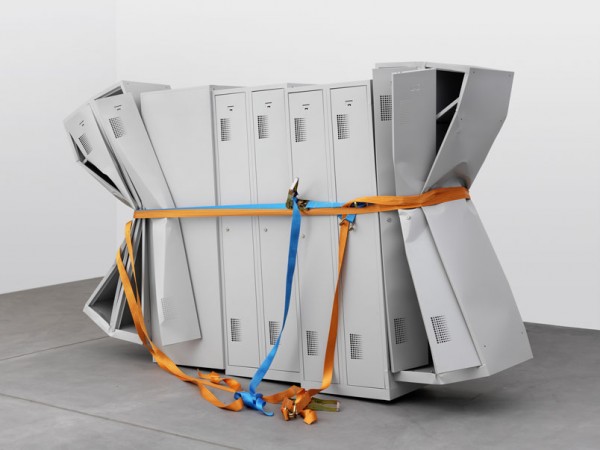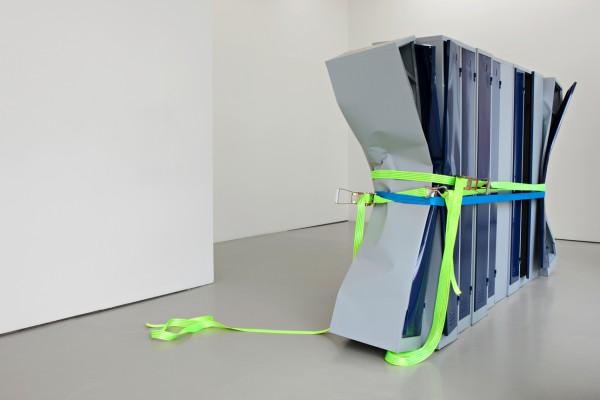Matias Faldbakken
Tuesday, 8 April 2014




Work from his oeuvre.
“Faldbakken’s solo show at Museum Boijmans van Beuningen is an example of the paradoxical nature of his institutional criticism. The exhibition presents a selection of pieces from his ‘Container’ series, which range from empty gas cans to abandoned garbage bags. The exhibition’s pivotal piece is Untitled / Locker Sculpture #2 (2011), which comprises a set of grey sheet-metal lockers, bound and squeezed into a useless deformity by two colourful industrial straps. The evidence of material violence in the resulting object – the stretching and crumpling – is what makes the installation work as a sculpture. Before visiting the Boijmans exhibition I had come across the piece at a group show in Amsterdam, but seeing it in the middle of a corridor in the museum made a very different impression. First of all, the location of the art work in a transitional space through which people walk on their way to other exhibitions in the museum makes the work less theatrical than it would be in a traditional white cube setting, and the arrangement of the other pieces on show further contributes to this anti-aural effect.
The other works in the show are exhibited behind glass walls, in four separate small rooms that remain inaccessible to the visitor: a pile of chrome-painted film reel canisters (Film Cans, 2006), a print showing two superimposed images of the back of a DVD cover (Double Cover Xerox 5, 2008), a couple minimal canvas (Canvas #37, 2011) in the background. Untitled / Garbage Bag #21 (2010), partly displayed hanging on a glass and partly abandoned on the floor, is the only other piece the visitor is able to touch.
With a Duchampian gesture, Faldbakken turns the container into content by bringing it to the functionless suspension of the art space. On this particular occasion, though, the casual relationship established with the audience is not the intimidating, quasi-religious experience of aesthetic contemplation that the artist intends to criticize. While the vitrine effect is indeed a reminder of the exclusivity of art as the ultimate luxury good, the proximity of the toilets – just around the corner – and the continuous foot-traffic definitely breaks the tension. Given that the art works are all drawn from a single private collection, it is understandable that they are not all equally strong works, but – as a provocation against the ever-forgiving inclusion of the white cube ideology – maybe picking the least pristine spot in the museum was not the best choice. Or, considering Faldbakken’s penchant for negation, maybe it was.” – Nicola Bozzi, Frieze Magazine